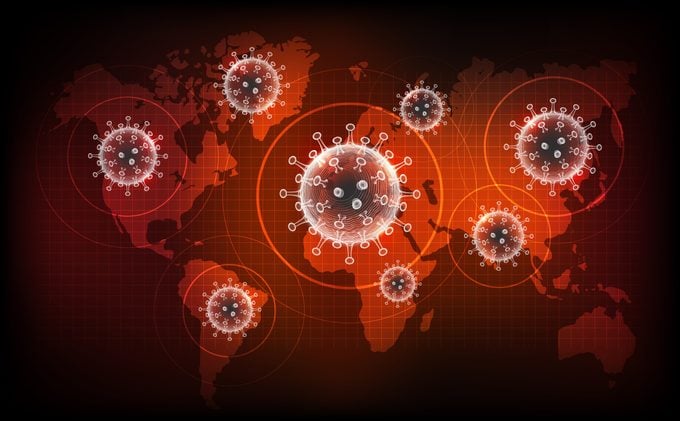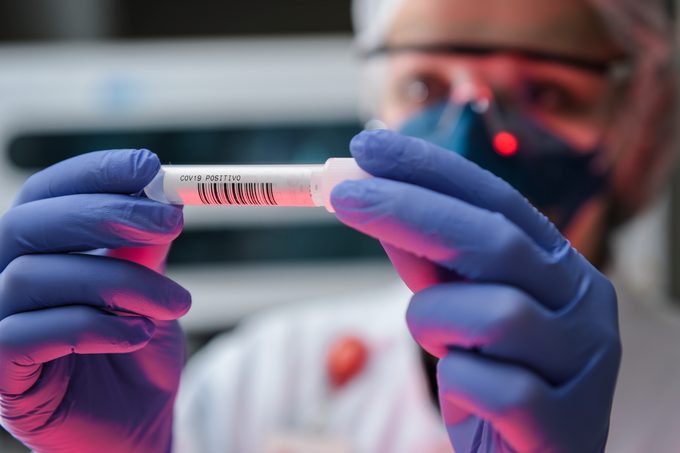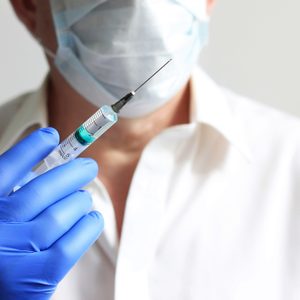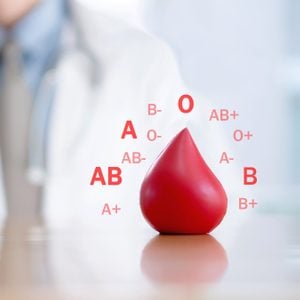How Many Covid-19 Virus Mutations Are There?
Updated: Jan. 28, 2021
The virus that causes Covid-19 is mutating—fast. Here's what that means for your risk of infection and symptoms.
The quick answer is a lot, but only one strain is concerning docs right now: The science world has been buzzing with troubling news that the virus that causes Covid-19 may have mutated in such a way to make it more transmissible. A preliminary study from April 30 and another on June 12 suggested that the virus variant, called G614, harbors a feature that allows the virus to more easily infect cells and therefore spread more rapidly. The concern rose even more last week when, Anthony Fauci, MD, head of the National Institute of Allergy and Infectious Diseases (NIAID), broached the idea during an online chat.
A mutation that speeds up Covid-19’s spread might explain why the virus—known as SARS-CoV-2—has so rapidly moved through North America and Europe, where the G614 mutated version is predominant. The original version of the virus, D614, was most widely seen in China and other parts of Asia.

How worried should we be?
Not all experts are convinced the virus has mutated into a more transmissible form. “I do not feel that we have concrete data that lead us to confidently say that,” says Greg Poland, MD, an expert with the Infectious Diseases Society of America (IDSA). An article posted July 3 in the journal Cell argues that the infectious nature and other aspects of the changing virus’s behavior are still unclear.
What is the significance of a virus that may have mutated to spread more efficiently, and how would that affect efforts to curb the pandemic?
How often do viruses mutate?
There are two types of viruses in the world: DNA viruses, which contain two identical strands of genetic information, and RNA viruses that contain just one strand. Like influenza, SARS-CoV-2 is an RNA virus. “All RNA viruses mutate. It’s not possible for them not to mutate,” says Dr. Poland, who is also director of the Mayo Vaccine Research Group in Rochester, Minnesota, and editor-in-chief of the journal Vaccine. “Mutations mean genetic changes in the virus. Those mutations can make the virus less severe, more severe, or no change.” (Find out if you can get reinfected with coronavirus.)
Not only do RNA viruses mutate, they mutate easily. DNA viruses have two strands of genetic information so a mutation on one strand can quickly be detected and deleted. With only one strand of genetic information, RNA has no internal fact-checking mechanism, and mutations stay and multiply.
More infections = more mutations
As viruses pass through humans, the more they are able to replicate and the more chances they have to mutate. SARS-CoV-2 actually mutates less rapidly than the influenza virus but, by now, has gone through so many hosts and replicated so many times, there are hundreds, thousands, or even more mutations out there, says Dr. Poland. The vast majority of these, he adds, are genetic duds and will fall by the wayside.
But there will only be more mutations. “Due to the lack of proofreading, SARS-CoV-2 should continue to mutate at the present rate,” explains S. Wesley Long, MD, PhD, assistant professor of pathology and genomic medicine, Houston Methodist Hospital, also adding that “most of these mutations have no effect on the virus.” (Learn how dangerous the new Covid-19 variants are.)
What’s different about the G614 mutation?
The G614 mutation—a change in one amino acid—is the one that has caught everyone’s attention. It affects the spike (S) protein, the one that juts out from the surface of the virus similar to a spoke on the Statue of Liberty crown. This spike allows the virus to enter unwitting host cells. The new research suggests that the spike protein carrying that mutation might be more successful at infecting cells, says Dr. Long. Once in the cell, the virus has more opportunities to reproduce and mutate.
None of the research thus far has indicated that the mutated virus may cause worse illness. “It’s important to remember that Covid-19 with this mutation has been common in the United States and Europe since March, and there is absolutely no evidence that this mutation or any other mutation makes a particular strain of Covid-19 more severe or more deadly,” adds Dr. Long.

Does the mutation explain transmission rates?
Certainly, having different strains of the virus could explain regional differences in how the fast it spreads, but experts are far from being able to state that definitely. In fact, yet another preliminary research paper updated on June 30 concludes that G614 does not increase transmissibility.
More often, says Dr. Poland, increased transmissibility is due to genetic factors in the host, and there are no shortage of those. “It could be cultural reasons, access to care, more diabetes, more obesity, less compliance, on and on and on,” says Dr. Poland.
(Here are 12 coronavirus symptoms you should watch for.)
What does this mean for vaccines and treatments?
Mutations can influence the potential effectiveness of vaccines and treatments. One of the reasons we’ve had such trouble creating a vaccine for HIV is that the virus mutates so quickly. In fact, says Dr. Poland, it mutates in the midst of treatment, rendering a treatment completely useless. That’s why people need to take multiple drugs at one time to outwit the virus, he adds.
For now, the SARS-CoV-2 mutations don’t have an effect on treatments or vaccines, especially because both are still in progress. “Mutations could occur which might affect potential vaccines or the effectiveness of antiviral therapies,” says Dr. Long. “This is one reason the flu vaccine changes annually. Thus far, with SARS-CoV-2, no such mutations have been identified, but treatments and vaccines are also in development, so it is difficult to predict the unknown.” (Read more about how soon we might have a vaccine for SARS-CoV-2.)
Good news for now
A preliminary analysis of SARS-CoV-2 genes sequences from patients co-written by Dr. Long found no evidence of mutations that would make the virus resistant to antiviral drugs like remdesivir, which has been shown to speed up recovery time in adults with Covid-19. Quite the contrary, the SARS-CoV-2 strains they looked at appeared likely to respond well to remdesivir.
It’s not out of the question that SARS-CoV-2 could evolve into a virus similar to influenza, which has repeated waves or seasonality; however, says Dr. Poland, “that’s a remote possibility.”
Back to prevention
So that brings us back to the one thing we do know about: Preventing Covid-19 infections.
“There are only two ways to get infected with the virus,” says Dr. Poland. The first way is to breathe it in. The second way is to touch a contaminated surface and then touch your eyes, nose, or mouth. Maintain social distance, avoid crowds, wear a mask, and wash your hands frequently with soap and water if they’re available. If not, use an alcohol-based hand sanitizer.
“There’s nothing mysterious or mystical or evil about this,” he adds. “If you wear a mask, if you keep your hands clean, and if maintain social distancing, you can’t get infected.” Next: Read about the Covid-19-related disease hitting children.



